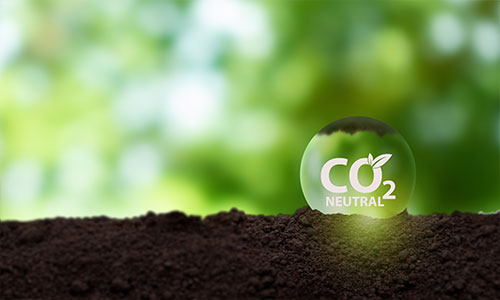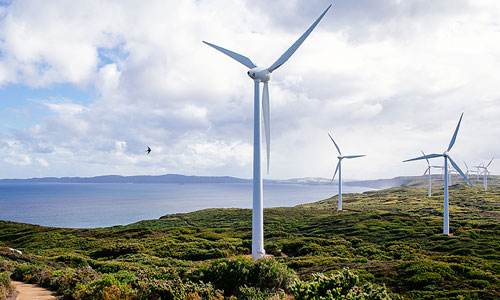News and Updates
The Road to Green Steel
19-Oct-2022
Last week saw the industry gather for Australian Steel Institute’s Australian Steel Convention, which ACRS is proud to be lead sponsor of. We were pleased to see such strong attendance from across the industry, with lots of familiar faces from both sides of Tasman. It was an important opportunity for the industry to consider challenges and opportunities on the road ahead.
There was a commendable focus on sustainable steel and the lead role that steel will take in the transition to renewable energy – a major trend for coming years. In the Ministerial Address, the Hon. Edham Nurredin Husic MP, Minister for Industry and Science, emphasised the central role he sees for the steel industry in the charge towards sustainability: both in the migration to low carbon steel, and just as importantly in the manufacturing of steel required for wind turbines and other renewable energy infrastructure.
Steel demand soars for renewable power
Globally, the production of steel for use in energy infrastructure, from windfarms to transmission lines, is projected to triple by 2050, as a result of the significant investment and construction of the new infrastructure will be required as we move away from fossil fuels. Australia’s transition to clean energy and net zero emissions by 2050 will be no exception, Husic noted, with huge volumes of proposed projects in wind and solar particularly requiring major supply of steel. Numbers bandied around included 45 tonnes of steel will be needed for each megawatt of solar energy generated, 161 tonnes for every megawatt of hydro power, 124 tonnes for onshore wind towers or 190 tonnes for offshore ones, and 1000s of kilometres of transmission lines to connect these new assets. ASI CEO Mark Cain estimated 15,675 tonnes of steel needed to fulfill currently proposed renewable projects.
The challenge will be to foster a local supply chain capable of maximising the economic benefits of that opportunity while meeting its own low-emissions targets. Demand must be present of course – and for this Husic pointed to government support, entailing effective local content policy (for example with both minimum requirements and stretch goals for locally-milled products) and updated criteria around government practices. But currently limited local supply chain capability means Australia has missed out on substantial economic value in recent years, with renewable projects forced to source overseas. This in turn creates supply risks for buyers and highlights the benefits of the ACRS scheme providing a verifiable compliance of steel quality.

Albany Wind Farm, Western Australia
The long journey to green
An insightful and frank presentation came from Gretta Stephens, Chief Executive of Climate Change and NZPI at BlueScope. You may remember Stephens’ previous comments calling for a reality check around the “green steel”, steel produced with no emissions, timeline, which we noted in our August newsletter.
Stephens spoke again factually about the ironmaking process and its decarbonisation, while outlining BlueScope’s decarbonisation pathway and the key enablers for the transition. BlueScope, like many major steelmakers, have set a net zero goal by 2050, with a 12% emission reduction by 2030 (for steelmaking, and a 30% reduction for non-steelmaking activities). BlueScope have a climate team, climate initiatives and linked climate performance to executive remuneration as part of the pathway to those goals. But decarbonisation will rest on five major enablers that BlueScope are progressing, namely: technology evolution; access to affordable renewable energy; availability of renewable-generated, competitively priced hydrogen; access to quality raw materials; and policy supporting decarbonisation investment.
ACRS supports the honest and pragmatic approach to steel produced with no emissions, and concurs that 'green steel' is some way away. We can only move towards it by setting benchmarks and measuring progress against them. It's key that we measure the progress of individual producers and the national industry as a whole in order to stay on the path to net zero in a clear and timely way. And while "green steel" is a long-term goal to work towards, steel is already being produced with lower emissions as producers seek to align with the UN's Sustainable Development goals. An inability to demonstrate environmental credentials is already disadvantaging suppliers in a global market that is increasingly looking for such proof to meet overall project sustainability targets.
For all these reasons, ACRS introduced its Sustainable Constructional Steel Certification in March 2021 – to enable consumers, industry & government to confidently source high quality constructional steels produced under high standards of environmental, social and ethical management and combat ESG confusion through the steel supply chain.
Our internationally recognised, best-in-class Sustainable Constructional Steel Certification helps producers demonstrate the sustainability of their product and gives the general public confidence that our cities are being built with environmentally and ethically sourced steel. Such measurements are crucial to continuing the journey towards sustainable steel.
If you have any questions regarding our Sustainable Constructional Steel Certification or other Schemes, please contact our office.
Email: admin@steelcertification.com
Phone:02 9965 7216